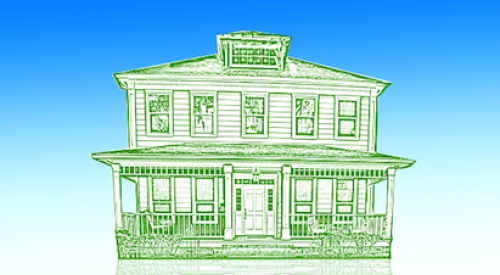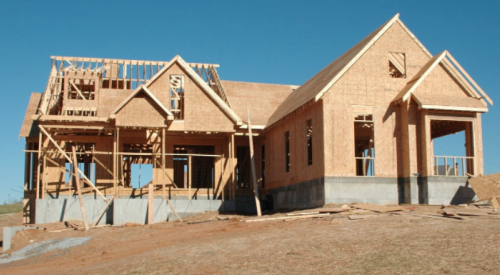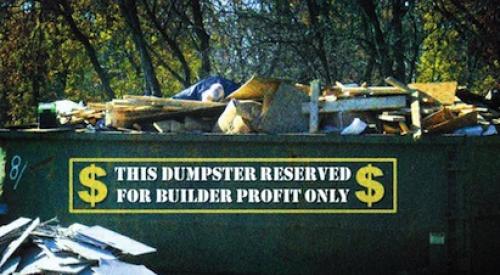Home builders know time is money. Make mistakes, and the costs to correct add up quickly. Quality-boosting initiatives can help builders save both resources and grow profits as a result.
When discovered, the range and extent of quality-related costs embedded in their construction process usually astound builders. They tend to treat a constant stream of quality errors that plague daily operations as a mere cost of doing business ù until they discover the costÆs magnitude. Those who quantify the cost of that lost time and effort soon learn that the greatest profit opportunities might be waiting inside their own organization.
ItÆs not easy to measure the cost of quality or ensure it on a job site. Traditional accounting wonÆt reveal the cost, but itÆs ingrained in normal job responsibilities. For example, when superintendents spend half of their time reacting to things that go wrong, the cost associated with that effort gets buried in an overall work-force budget. Likewise, all employees, from pickup laborers to management, spend significant though untracked time dealing with quality and customer satisfaction issues.
|
A solution, however, exists. Institute a cost-of-quality estimating process and follow it up with a First-Time Quality process. These methods, practiced by builders in conjunction with their trade partners, arenÆt hard to understand if you do the math. The math might not be exciting, but discovering profit sources is always its own reward.
Builders who have instituted a quality cost-estimating process have found internal quality costs to be 2% to 4% of sales. Adding trade contractor quality costs typically drives that range up to 8% to 12%. In this context, itÆs easy to see that excess time spent on quality issues costs you money.
Estimate Your Cost of Quality
Builders and trade contractors can get a rough idea of the profits to be uncovered by taking about 10 minutes to do a preliminary cost-of-quality estimation using the following steps and the worksheet below.
Click here to see the worksheet
Step 1: Estimate the percentage of time spent dealing with quality problems by each job category (superintendent, manager, punch-out laborer, administrative and warranty personnel, etc.). Consider time for inspections, repairs during or after construction, follow-up on repairs, reschedules arising from quality delays, rescuing home buyer relations, managing trade partner performance and processing repair-related paperwork. Record the percentage of time for each job category in column A on the worksheet. Validate your time estimate by imagining how many hours a day the job would take if everything went right the first time.
Step 2: Enter in column B the number of people who work in each job category.
Step 3: Compute the number of full-time-equivalent employees. In each row, multiply the percentage of time by the number of people and enter the result in column C. For example, 50% x 6 people = 3.0 equivalent people. Add all job categories and enter the total on line 9.
Step 4: Calculate the bottom-line cost. To simplify matters, use one labor-cost rate. Select the job category with the greatest number of equivalent people and enter the annual labor cost for that category on line 10. Multiply that number by the total number of equivalent people to arrive at your annual labor cost for dealing with quality problems.
Step 5: Analyze costs in ways that help put quality in perspective. For cost per home, divide the total cost on line 11 by the number of homes built per year. To see how much passing the average inspection costs, divide that result by the number of inspections per home. For the cost of a typical repair item, divide that figure by the typical number of punch items found at an inspection.
A call to action for a quality initiative might need further analysis. If thatÆs the case, refine your figures using more accurate data such as actual labor rates for each job category; time estimates based on time studies or employee surveys; and additional non-labor costs such as the price of repair materials, equipment and lost production.
Activity-based costing methods familiar to cost accountants can further define quality costs attributable to prevention, appraisal and failure in specific problem areas. Deeper analysis also can place a dollar value on construction qualityÆs effect on customer satisfaction.
When choosing the level of detail for your analysis, keep in mind that the goal is a credible cost-of-quality estimate you can use to pursue a profitable business opportunity and to implement a strategy for attaining First-Time Quality.
Principles for First-Timers
A First-Time Quality strategy requires new thinking that guides the transformation to no errors, repairs or quality costs.
Aggressively attack recurring construction errors in proportion to their quality cost. The money saved is directly proportional to the number of errors removed from the construction process and can measure the effectiveness of individual initiatives as well as the entire quality program.
Everyone must be accountable for reducing quality costs and achieving First-Time Quality. Use numeric measures to link personal performance to business results. A system of rewards and consequences can align employee and trade contractor priorities at three milestones: trade contractor quality, internal quality and home buyer quality.
Establish a formal system of quality assurance as the foundation for controlling key elements that affect quality as well as standards and specifications, operating policies, qualified personnel, documented inspections and defect control.
Putting Quality Into Action
The following steps will integrate these principles into a systematic process that motivates employees and key trade contractors to share the builderÆs vision, support the quality effort and recover the cost of quality. Most builders take six to eight weeks to make this transformation.
Step 1: Show me (or them) the money. Money is a great motivator, so show your staff and trade contractors the profit opportunities from First-Time Quality. Start by calculating the annual cost of quality using the method described previously, and then link this cost to specific recurring quality errors at each inspection in the construction process.
Most builders estimate that preventing the top 100 quality hotspots would reduce their cost of quality by 80%. When people grasp that each hotspot can cost thousands of dollars each year, they tend to attack hotspots with a vengeance.
Typically, a half-day workshop is sufficient to estimate the cost of quality, break down the costs and create hotspot action items. Including trade contractors in this process helps establish mutual goals and foster partnerships.
Step 2: Attack quality hotspots. The number of hotspots can overwhelm. Break them into monthly streams to be metered to the field. Every month, assign each key trade at least one hotspot to attack. If a dozen trade contractors eliminate 10 hotspots each in one year, the cost of quality can be halved.
To facilitate the process, take photographs to make hotspot details perfectly clear, and circulate them to field personnel and trade contractors. Trades should use the photos in toolbox talks with their crews and during subsequent inspections.
Once everyone understands the process, it usually becomes standard practice in a matter of weeks.
Step 3: Use an inspection scorecard. Traditional inspections become a tool for quality accountability when they document performance in achieving First-Time Quality and verifying quality hotspots.
At each inspection stage ù trade contractor performance as inspected by the builder superintendent, superintendent performance as inspected at independent quality walks at framing and pre-orientation, and builder performance as inspected by home buyers at orientation ù the inspector evaluates First-Time Quality, assigns a 1 to 5 score based on the level of problems found and records it on an inspection form. A high quality score indicates no problems and no additional quality costs. A low score indicates lower initial quality and a higher cost to correct problems.
Step 4: Make all parties accountable. First-Time Quality scores provide immediate feedback on quality costs for each home and can be used to track performance trends.
Tabulate monthly scores for trade contractors, builder superintendents and home buyer orientations. Track the average score and the percentage of First-Time Quality inspections (rating level 5). Tabulating quality ratings takes only a few hours if done manually, or a computer can be set up to do this.
When a builder shares monthly ratings with all parties, First-Time Quality performance measures come alive by rewarding top performers, motivating those in the middle and warning poor performers to improve. Once a baseline is established, each trade contractor and superintendent should have an annual quality improvement plan that is actionable and measurable.
Make It Happen
With big money at stake, it is important to plan your success. Estimate your cost of quality, and then carry out the First-Time Quality steps in a series of workshops. Led by a senior construction manager, workshops can begin with your construction team and 10 or 12 key trade partners, and then be opened to all partners as you gain experience. Control the process so all trades come up to speed together.
ItÆs satisfying to see early achievements breed excitement and create momentum for programs that reduce the cost of quality. This type of initiative tends to take on a life of its own, driven by its own success. All it takes to get started is a vision, leadership and a plan.
Ed Caldeira, president of Caldeira Quality, a quality training and implementation firm, can be reached at 410/451-8006 or cq@caldeiraquality.com.












